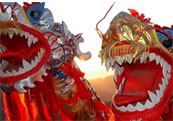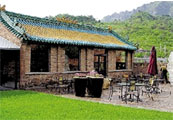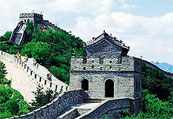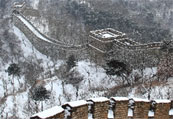Ancient suburb , Yanshan Xiong to , that piece of land nestled in the mountains between , since ancient times, it has be tolerant to diversity of the heroic . Experienced the flames of the Warring States Period , the Qin and Han cavalry , the Millennium heritage, is there today take off Huairou .

Located in the north of the capital of multiple ancient dynasties Beijing and nestling between green mountains and clean waters, Huairou serves as the main thoroughfare of Yanshan Mountain. Since ancient times, Huairou had symbolized a broadminded mettle. It had seen beacon fires in the battles during the Warring States, cavalry assaults in the military conquests during Qing and Han Dynasties, and underwent thousands of years of transmission and inheritance before becoming present today Huairou which features soaring development.
In the past, Huairou was a brilliant pearl in East Beijing Development Zone, and an important component of the international exchange center. Today’s Huairou is Beijing’s new high-end culture & technology industry zone and new international convention zone. Also, it is one of the four high-end industry zones subject to focused development by Beijing municipal government.

The name of “Huairou”, meaning “conciliating”, derives the earliest from the verse “conciliating all gods” in the poet “At That Time the Emperor Inspects and Worships the Gods of Mountains and Rivers” in volume “Eulogies of Zhou” in the classic ancient Chinese collection “the Book of Songs”. And then forefathers picked this word from the verse and used it to name this plot of land, to convey the meaning of people-centric moral politics and blending & symbiosis.

Huairou District covers gross land area of 2,122.6 square kilometers, of which, mountainous area makes up 89% of the total. In Huairou District there are 12 towns, 2 townships, 2 sub-district offices, and 284 administrative villages, with total population hitting 388,000 (including 278,000 permanently registered residents and agricultural population of 153,000).
As one of Beijing City’s suburban counties, Huairou District (116°17′~116°63′ E and 40°41′~41°4′ N) is located in the northeast of Beijing City, and it is 50 kilometers away from “Dongzhimen” neighborhood of Beijing, with gross land area of 2,122.6 square kilometers.
Huairou District is adjacent to Shunyi District on the south, Changping District on the southwest, Yanqing County on the west, and Miyun County on the east. From its northwestern part to northeastern part, it borders on Chicheng County, Fengning County, and Luanping County of Hebei Province in succession.

In Huairou District there are numerous mountains. As described by Xie Qian, a grand secretary during Hongzhi’s reign of Ming Dynasty: “Huairou County brims with lofty hummocks and undulating peaks, which extend for thousands of miles”. In the district, mountainous area makes up 89% of the total area. Amongst those stretching and undulating mountains in Huairou District there are 500 peaks with names, including 24 of them more than 1,000 meter high. It is worth pointing out that the famous Heituo Mountain in the north of Beijing has an altitude of 1,533.9 meters, and the Nanhouding Mountain, which is located in Labagoumen Manchu Township, has an altitude of 1,705 meters and is reputed as the No. 1 Peak in Huairou District. Those vast, verdant, and stretching and undulating mountains constitute a green “Great Wall” and natural defense for Beijing, capital of China.
Not only are the mountain fields broad, but also rivers and springs are numerous in Huairou District. Needless to say, the water resources are abundant and water quality excellent in the district. In Huairou District there are 17 rivers categorized as above Level 4 that belong to Chaobai River System and Beiyun River System, such as Baihe River, Tanghe River, Tianhe River, Liuli River, Huaisha River, Huaijiu River, Yanqi River, and Bailang River, in addition to 774 mountain springs, including 261 mountain springs with stable surging. Constantly running rivers and springs flow towards the southeastern suburb of Beijing, and converge with other water systems of Beijing suburb, leading to generation of the vast and boundless pluvial-alluvial fan plain.
Huairou District boasts abundant tourism resources, and it has completed and put into running 26 scenic areas and spots that center on mountains & waters and humanistic landscapes, as well as 15 Class A scenic areas (including one Class AAAAA scenic area, three Class AAAA scenic areas, nine Class AAA scenic areas, and two Class AA scenic areas). Huairou District is equipped with more than 120 hotels, restaurants, training centers, and holiday villages, of which, there are 30-odd star-level hotels, 46 countryside tour reception villages, and more than 3,200 countryside tour households (including 33 municipal-level villages and 1,126 municipal-level households). By constantly consummating its tourism industry, Huairou District has basically cultivated a diversified tourism product pattern that takes natural landscape tour as the foundation, leisure & vacation tour and countryside yummy tour as the trait, and business convention & exhibition tour, film & TV culture tour, and competition event tour as the fashion, which can meet different levels of tourists’ demands.